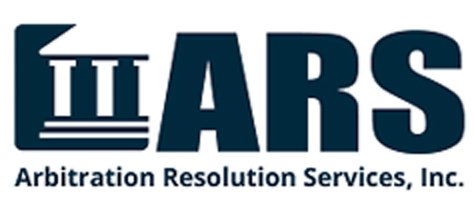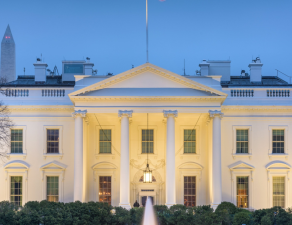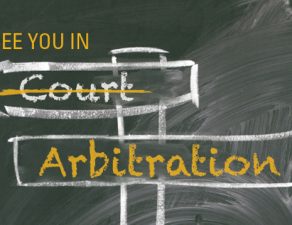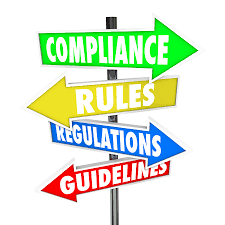The Camel and the Last Straw or the Frog and the Boiling Water: Pick Your Parable
By George H. Friedman*
The current issue of the Securities Arbitration Commentator has as its lead story an article I wrote with the title above. For those who don’t subscribe, here is the Reader’s Digest version. Or maybe the USA Today iteration.
We all know the two parables that title this article. What do they have to do with securities arbitration? It’s my concern that, if approved, FINRA’s recently announced arbitrator classification rule filing[1] – on top of the many rule changes over the last several years that have come at the expense of the securities industry[2] – may be the last straw for the industry and FINRA arbitration. Stated differently, the securities industry may step back, see that the securities arbitration pot is boiling, and jump out in whole or in part. And that would not be a good thing – for either side.
Fourteen years ago I wrote an article[3] in the Commentator contending that the securities arbitration playing field was in fact level and that, if anything, it was slightly tilted toward investors. Several changes took place after I wrote my article. If the proposed classification rule is approved, I am concerned that the arbitration playing field will be taking on a Titanic-like list from the industry’s perspective.
What’s not to like in the Proposed Rule?
There are aspects of the proposed rule that each side – including arbitrators[4] – may not like. For example, the customers’ bar might not be thrilled to learn that the proposed rule would disqualify as public arbitrators individuals whose firms meet a 10 percent/$50,000 annual income threshold based on serving retail or institutional investors “relating to securities matters.” But, I think the industry will be most unhappy. Why?
- If you ever worked in the Financial Industry, Once a Non-Public Arbitrator, Always a Non-Public Arbitrator
The first major change impacts arbitrators who worked in the financial industry for any amount of time. The new rule would essentially freeze an arbitrator’s non-public classification, if that individual ever worked for any duration in the “financial industry” The proposed rule has no exceptions. FINRA says this change is meant to address concerns expressed by investor reps that some public arbitrators are not truly public.
Why this matters: an expanded non-public roster just when we don’t need it: The net effect of this rule change will be to effectively cleanse the FINRA roster of public arbitrators with any securities industry experience whatsoever. This in turn will of course strain the public roster which, as discussed above, will also be shrinking. Let’s also remember that FINRA’s customer case filings are now at multi-year lows. If past is prologue, a market downturn or major product failure will spike case filings, placing further demands on the public roster.
- Professionals Serving the Financial Industry
Another key change involves lawyers, accountants, and other professionals who provide services to the industry. The proposed new rule expands, contracts and clarifies the current rule. Expanded is: 1) the look-back period, which goes from two to five years; and 2) the application of the rule not only to the financial industry but also to “persons or entities associated” with it. Contracted is the 20-year permanent disqualification criteria, which is reduced to 15 years. Clarified is the term “professional work,” which becomes “professional time” because it is easier for prospective arbitrators to calculate.
Why this matters: While the shorter permanent disqualification period lessens the impact of the proposed change, the net effect is that it will take three years longer for these individuals to become public arbitrators, and more arbitrators with diminished securities experience will be classified as non-public because of the broadened definition of what constitutes providing services to the industry. This most likely will not be seen by the securities industry as a benign change.
- Employment Attorneys and Other Professionals
The proposed rule would also disqualify as public arbitrators attorneys, accountants and other professionals who devote 20 percent or more of their professional time within the last five years to “serving parties in investment or financial industry employment disputes.” But another part of the proposed rule classifies these individuals as non-public. While most of these arbitrators could become public after the five-year cooling off period, they would stay non-public forever if they accumulated 15 years of service in their career.
Why this matters: As I read it, the proposed rule would classify as non-public attorneys making their living bringing claims on behalf of employees against the securities industry. Just a hunch but I don’t see this sitting particularly well with the securities industry, especially when one bears in mind that FINRA intends all proposed changes to apply to the Industry Code as well as the Customer Code.
My Concerns about a Possible Industry Defection
Although this rule change was endorsed by the National Arbitration and Mediation Committee and the FINRA Board of Governors – both majority-public bodies – I am nevertheless concerned that the proposed rule may cause the securities industry to rethink its support of arbitration, in whole or in part. The industry might decide it is comfortable arbitrating smaller cases but not larger ones. Why? Because the stakes for the securities industry become much higher when dealing with: 1) large claims; 2) being heard by panels having questionable qualifications; 3) coupled with the very limited judicial review of arbitration awards available under the Federal Arbitration Act. Granted, I may be totally off on this, but then again, I have a pretty good track record predicting future events and trends in the ADR field.[5] Why, specifically, am I concerned?
- Brokerage firms do not have to use predispute arbitration agreements: It’s worth remembering that there is nothing in the FINRA rules that requires the securities industry to use predispute arbitration agreements (“PDAAs”), as long as they don’t attempt to extinguish the investor’s right to demand FINRA arbitration.
- While large firms have strongly supported PDAAs, many small firms have not. While we tend to think of the securities industry as a monolith, it is not. Many smaller firms have been leery of arbitration, mostly because one arbitration award can put a smaller firm out of net capital compliance.[6]
- The securities industry may give up on FINRA arbitration, at least for large cases. On top of the changes over the last several years, I am concerned that the arbitrator classification rule if approved is going to lead the industry to consider abandonment of PDAAs, at least those that solely list FINRA as the arbitration forum or send all cases to arbitration irrespective of size. The alternative might be PDAAs that offer other dispute resolution providers like AAA or JAMS or– dare I say it – going to court, for all or larger cases. And in fact some brokerage firms already do not require institutional investors to sign PDAAs.[7] Also, if the past is any indication, few investors would be attracted to a non-SRO arbitration forum such as AAA or JAMS.[8] The demise or diminishment of FINRA arbitration would not be good for investors or for that matter the securities industry.
- Arbitration filings – at least for larger cases – may dry up. If I am correct about the industry’s reaction, then FINRA arbitration case filings would likely dry up because the only source of cases would be Rule 12200. An arbitral institution like FINRA might find it untenable to maintain its forum in a time of greatly reduced and inconsistent case volume.[9] FINRA becoming a small claims forum would also pose problems. As I wrote in this publication a year ago, when you break the glass and ring the fire alarm, you want to be sure there’s a fire brigade to respond.[10]
- FINRA Dispute Resolution is the fairest, most economical game in town. Private providers like AAA and JAMS are fair, but don’t come close to FINRA in terms of rules and fees.[11] This point was well-made by former SICA chair Tom Stipanowich, a leading authority in the arbitration field. FINRA’s arbitration program got high marks when measured against the “arbitration fairness index” he created.[12]
- Court is usually no place for either party to be. Going to court is terrible for all parties, especially investors. While a significant portion of the investors’ bar supports the idea of having the option to go to court, I suspect this rests on a belief that FINRA Rule 12200, which gives customers the unilateral right to require arbitration of disputes with their broker, will always exist. As I’ve written in this publication, if PDAAs go away, the securities industry would surely call for the abolition of Rule 12200.[13]
If arbitration is eliminated, I stand by my belief that litigation would be a poor way for the parties to resolve their differences. I recently blogged on this very topic, pointing out the top ten things critics of arbitration won’t tell you about the awful realities of litigation. Again, bear in mind these realities apply to both sides.
What to do?
This rule proposal is clearly well-intended but in my opinion it could have negative consequences if approved. I suggest FINRA go back to the drawing board:
- Keep it Simple. The arbitrator classification system, as it exists and as it may exist in the future, is a complicated mousetrap with many moving parts. I urge FINRA to try to keep things simple, something that can only help parties, arbitrators, and staff. A reasonably good model to emulate is the AAA’s Securities Arbitration Supplemental Procedures, where arbitrators must fall into one of two categories, “affiliated with the securities industry” or “not affiliated with the securities industry,” or they can’t be arbitrators.
- Move to “pure public” arbitrators as the rule proposes but do not designate all newly-reclassified arbitrators as non-public. Move these arbitrators to a “can’t be an arbitrator” category. This is similar to how the Codes now handle individuals like spouses of brokers, or others disqualified from being public but who don’t otherwise qualify as non-public.
- Do not keep arbitrators non-public forever. Move arbitrators to the “no-man’s-land/can’t be an arbitrator” status after they are not involved in or with the industry for a number of years.
- Go back to an “affiliated with the securities industry” classification, especially for the Industry Code. If customers don’t want arbitrators from the industry they will strike them. But we can’t expect the securities industry to accept a “non-public” roster bloated by arbitrators who don’t know the industry, or who are attorneys representing employees.
- Do a cost-benefit analysis on the rule’s potential impact (or reveal the results if one has been done). Having spent fourteen years at FINRA and being very familiar with its corporate culture, my guess is that it conducted an impact analysis of some sort. But, if FINRA has done such an analysis, it’s not referenced in the rule filing. This leaves the first blush impression that the net impact of the proposal would be to reduce the number of public arbitrators – currently 3,562[14] – while demand for them increases because almost every customer case will end up with a public panel. At the same time, it would appear that the ranks of the non-public roster will expand while demand for such arbitrators declines. [15] If such an analysis has been done, FINRA should release the results. If not, then FINRA must do one. For that matter, a cost-benefit analysis of a potential elimination of PDAAs by the securities industry might be a good idea.
- Have the newly-formed Arbitration Task Force review the rule filing: On July 17th, FINRA announced the formation of an Arbitration Task Force, whose role is “to consider possible enhancements to its arbitration forum to improve the transparency, impartiality and efficiency of FINRA’s securities arbitration forum for all participants.” Arbitrator classification should be its first order of business.
Conclusion
Industry abandonment of arbitration for some or all cases might look like a good thing to some on both sides, but as Henry Ford’s once said, “If I had asked people what they wanted, they would have said faster horses.”[16] The author realizes he is treading in a potential minefield. After spending close to four decades building trust among a diverse group of constituents in the alternative dispute resolution community, it’s possible that, with this article, I will manage to offend my friends in both the customers’ bar and the securities industry, and at FINRA. If I manage to unite all sides in their anger with me, perhaps some consensus will emerge. Who knows, we may see PIABA and SIFMA joining hands to craft an improved, simplified classification rule. Then another parable – the lion and the lamb – will come into play.
————
[1] See SR-FINRA-2014-028, available at http://www.finra.org/web/groups/industry/@ip/@reg/@rulfil/documents/rulefilings/p532202.pdf. Also, Federal Register vol. 17, no. 128, p. 38080 (July 3, 2014) Notice of Filing, available at http://www.finra.org/web/groups/industry/@ip/@reg/@rulfil/documents/rulefilings/p544264.pdf <both visited July 16, 2014>.
[2] And some rule changes that were proposed but abandoned. For example, in 2005 NASD proposed a rule that would have given investors the unilateral right to require an explained decision from the arbitrators. See New Arbitration Rule Requires Award Explanations upon Investor Request (Jan. 27, 2005), available at http://www.finra.org/newsroom/newsreleases/2005/p013145 <visited July 16, 2014>. The proposal was withdrawn after both sides didn’t support it, albeit for different reasons.
[3] See Friedman, George, The Level Playing Field, XI:12 Securities Arbitration Commentator 1 (July 2001), available at http://www.proffriedman.com/files/Level.PDF <visited July 16, 2014>.
[4] Yes, arbitrators, large numbers of whom may end up being disqualified or reclassified. Just how many one cannot say; FINRA provided no indication in the rule filing that it has conducted any impact analysis.
[5] See, Trust me on this, I’m from the Future! Confessions of an Accidental Futurist (Feb. 20, 2014), available at http://www.wfs.org/blogs/george-friedman/trust-me-one%E2%80%94im-future-confessions-accidental-futurist and Trust me on this, I’m from the Future! – Part II (Apr. 2014), available at http://www.wfs.org/blogs/george-friedman/trust-me-one%E2%80%94im-future-%E2%80%94-part-ii <both visited July 16, 2014>.
[6] See Briton, Diana, A Cautionary Tale: How One Arbitration Can Topple a Firm (July 8, 2011), available at http://wealthmanagement.com/legal-compliance/cautionary-tale-how-one-arbitration-can-topple-firm. Also, Notice to Members 07-17, available at http://www.finra.org/web/groups/industry/@ip/@reg/@notice/documents/notices/p018897.pdf, and in general the industry comments opposed to increasing the single-arbitrator threshold from $50,000 to $100,000, available at http://www.sec.gov/rules/sro/finra/2009/34-59340.pdf <all visited July 16, 2014>.
[7] See Ryder, Richard, Institutional Investors & PDAAs – Will the Twain Soon Meet?” 2009:3 Securities Arbitration Commentator 1 (April 2010).
[8] See Final Report, supra note 9, at 3. A survey of investors eligible to participate in the pilot “reaffirmed the basic themes that higher costs, more familiarity with the SRO forums, and possible additional delays were the main reasons claimants did not choose the non-SRO forums.”
[9] See Gross, Jill, The End of Mandatory Securities Arbitration? 30 Pace L. Rev. 1174, 1189-93 (2010), available at http://digitalcommons.pace.edu/cgi/viewcontent.cgi?article=1736&context=plr <visited July 16, 2014>.
[10] Friedman, George, The Arbitration Fairness Act: a Well-intentioned but Potentially Dangerous Overreaction to a Legitimate Concern, 2013:1 Securities Arbitration Commentator 1 (June 2013), available at http://www.proffriedman.com/files/SAC_AFA_Article__final_06-2013_.pdf <visited July 16, 2014>.
[11] See, Leiby, Larry, What Does it Cost for AAA, JAMS, or CPR to Administer an Arbitration Case and how do the Initial Filings Vary? 88:7 Fla Bar Journal 1 (Jul/Aug 2014), available at http://tinyurl.com/nsf9gj4 <visited July 16, 2014>.
[12] See Stipanowich, Thomas, The Arbitration Fairness Index: Using a Public Rating System to Skirt the Legal Logjam and Promote Fairer and More Effective Arbitration of Employment and Consumer Disputes, 60 Kansas L. Rev. 985, 1024-5 (2012), available at <http://papers.ssrn.com/sol3/papers.cfm?abstract_id=2004543) <visited July 16, 2014>.
[13] See, Friedman, George, Defining who is a Customer in FINRA Arbitration: Time to Clear Things Up!” 2012:6 Securities Arbitration Commentator 1 (May 2013), available at http://www.proffriedman.com/files/Defining_Who_is_a_Customer.pdf <visited July 16, 2014>.
[14] Statistics available at http://www.finra.org/ArbitrationAndMediation/FINRADisputeResolution/AdditionalResources/Statistics/ <visited July 16, 2014>.
[15] These points are very thoroughly addressed in Peters, Sarah Scott, Ward, Bryan M. and McCormick, Andrew M., Everybody Out of the (Public Arbitrator) Pool, Law 360 (July 3, 2014), available at http://www.law360.com/articles/552840/everybody-out-of-the-public-arbitrator-pool <visited July 16, 2014>.
[16] See http://www.goodreads.com/quotes/15297-if-i-had-asked-people-what-they-wanted-they-would <visited July 16, 2014>.






